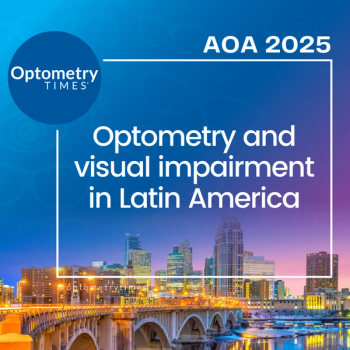
- Optometry Times Vol. 10 No. 11
- Volume 10
- Issue 11
5 steps to manage cataract patient expectations
Some colleagues of mine have reminded me that what ODs tell their patients prior to surgery is going to be an expectation, and things that happen after the procedure that are not discussed are considered complications.
That has profound implications on both the psyche of the refractive surgical patient and all the doctors and staff that are managing the patient’s procedure.
It seems as though most optometrists leave the heavy lifting, or difficult discussions, for the surgical center; this in fact is a critical step in the refractive surgical procedure that should happen in the optometrist’s lane.
I would argue though, that communication is most likely occurring and ODs are just not aware of the clandestine overtures they’re already imparting to each patient.
Allow me to make some assumptions to further justify my belief that ODs, the primary eye care profession, are in fact preparing our patients for surgery.
Furthermore, when I speak of refractive surgery I am including cataract surgery which in 2018 is more a refractive surgery than it is a medical procedure.
There is an inherent inner dialogue that ODs process prior to any "refractive” decision initiated with patients. If a patient needs glasses, desires contacts lenses, or is interested in not wearing anything to alleviate their refractive posture, ODs speak of the risks, benefits, challenges, and opportunities for each patient.
With the “silver tsunami” engulfing practices, discussion regarding cataract treatment is now poised to be the most consistent discussion ODs have on a daily basis.
However, unlike glasses and contact lenses - which can be titrated -surgical patients need to have a more thorough evaluation of their wants and needs.
The management of patients’ expectations can be broken down into five steps:
1. Communication
ODs participate in this listening session every time they attempt to derive what is the impetus for their patients’ visits.
Crucial to this step is the ability to really listen to what patients are stating.
For example, patients who work at a computer all day but are avid fly-fishermen may think that their ability to see their flies or the intricate work in making the flies is the refractive posture they would like to have. Thus, working at a computer with spectacle correction is less important than seeing their handiwork.
Really listening to what the patient wants is not only the starting point but the foundation for making any other treatment recommendation.
2. Fidelity
The next important thought is ensuring patients’ needs are met. Patients’ eyes may be limiting factors for their visual aspirations. Time should be spent elucidating the reasons why a procedure or lens option is not a good idea so that the patient can fully appreciate their own reality.
We live in a time where most patients know someone who had a procedure, and their tales of amazement can often be exaggerated. Therefore, when looking at their options, ODs should take everything into consideration.
3. Broker
Eye doctors strive to give patients everything they think they need or want from their vision. They negotiate refractive distances and lens options to best accommodate their patients’ needs.
Implicit in this brokerage is that patients know where they gain and where they give up something. An example is with the presbyopic-correcting IOLs. Some of the lenses are outstanding for distance and intermediate and may be limited for very near tasks.
ODs also know the patients will experience some form of glare and halos at night time. Thus, knowing which is more important for the patient-night tasks or close vision-can help ODs negotiate the risk-benefit to achieve a maximum result.
4. Consensus
If the prior discussion points are achieved, then the agreement about how to proceed has already been consented. Patients come for the acumen ODs possess and to use that experience to make the most prudent recommendations. I like to explain the course of action to patients and then have them repeat it back to me in their own words.
There have been instances where ODs believe what that their patients understand in which they are saying, only to have a family member call back and state the patient was confused or couldn’t articulate the next step.
5. Documentation
In real estate, it is all about “location, location, location;” for optometry, it is “document, document, document.”
Pre-printed forms for patients to sign or brochures that highlight the risks and benefits, as well as the consequences and the potential side effects, should be the last thing patients have in hand when they leave the office.
If patients sign contact lens agreements and for their records or Health Insurance Portability and Accountability Act (HIPAA) forms, then ODs should also have them sign an agreement about the course of their surgical procedure.
Medicine is not an exact science, and ODs know they can minimize the sequelae of any treatment.
A surefire way to be upfront and honest is to describe all the possibilities and point out the limitations. Be an advocate for the patient and provide good clinical advice. Patients will appreciate it, and an unexpected misunderstanding can be avoided.
Articles in this issue
about 7 years ago
How to handle non-ophthalmic emergenciesabout 7 years ago
Q&A: Cornea, almost two residencies, and a Vietnamese hoagieabout 7 years ago
Imaging aids in differential diagnosis of uncommon diseaseabout 7 years ago
Why doctors are rethinking AMD standardsabout 7 years ago
Know the link between cotton wool spot and anemiaabout 7 years ago
Knowing when to delegate testing responsibilitiesabout 7 years ago
How hyperopes differ from myopesabout 7 years ago
When to refer patients with diabetic retinopathyabout 7 years ago
Dialogue with lecturers at CENewsletter
Want more insights like this? Subscribe to Optometry Times and get clinical pearls and practice tips delivered straight to your inbox.













































.png)


